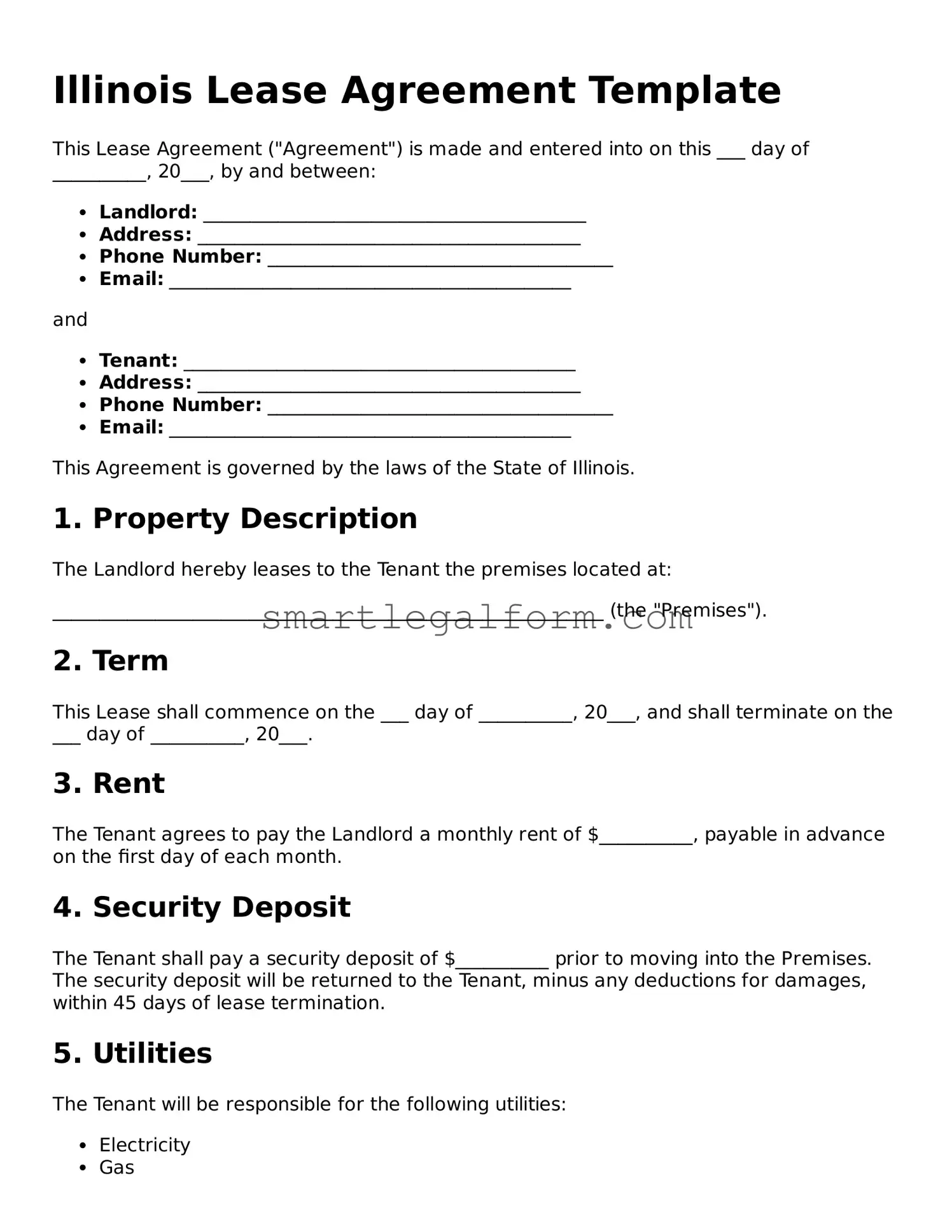Illinois Lease Agreement Template
This Lease Agreement ("Agreement") is made and entered into on this ___ day of __________, 20___, by and between:
- Landlord: _________________________________________
- Address: _________________________________________
- Phone Number: _____________________________________
- Email: ___________________________________________
and
- Tenant: __________________________________________
- Address: _________________________________________
- Phone Number: _____________________________________
- Email: ___________________________________________
This Agreement is governed by the laws of the State of Illinois.
1. Property Description
The Landlord hereby leases to the Tenant the premises located at:
___________________________________________________________ (the "Premises").
2. Term
This Lease shall commence on the ___ day of __________, 20___, and shall terminate on the ___ day of __________, 20___.
3. Rent
The Tenant agrees to pay the Landlord a monthly rent of $__________, payable in advance on the first day of each month.
4. Security Deposit
The Tenant shall pay a security deposit of $__________ prior to moving into the Premises. The security deposit will be returned to the Tenant, minus any deductions for damages, within 45 days of lease termination.
5. Utilities
The Tenant will be responsible for the following utilities:
- Electricity
- Gas
- Water
- Internet/Cable
6. Maintenance and Repairs
The Tenant agrees to maintain the Premises in a clean and habitable condition. Any necessary repairs must be reported to the Landlord promptly.
7. Use of Premises
The Tenant may use the Premises for residential purposes only. No pets are allowed without prior written consent from the Landlord.
8. Termination
Either party may terminate this Agreement by providing written notice of at least 30 days prior to the end of the lease term.
9. Governing Law
This Agreement shall be governed by and construed in accordance with the laws of the State of Illinois.
10. Signatures
IN WITNESS WHEREOF, the parties hereto have executed this Lease Agreement as of the day and year first above written.
Landlord Signature: ___________________________ Date: ____________
Tenant Signature: _____________________________ Date: ____________
